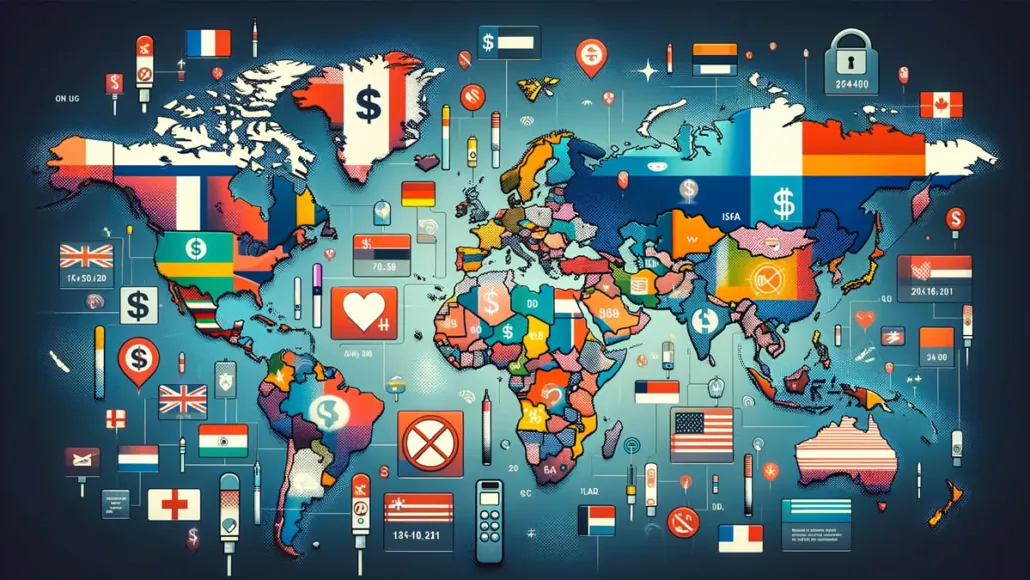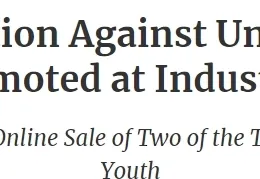Vape Taxes Worldwide: A Global Overview 2024
As e-cigarettes continue to gain popularity worldwide, governments are increasingly targeting them as a source of tax revenue. Tax authorities correctly recognize that money spent on e-cigarettes is money not spent on traditional tobacco products, which governments have relied on for decades as a source of income. The question of whether vape devices and e-liquids should be taxed like tobacco is hardly the point; governments see that they are driving smokers away from tobacco, and they understand that the lost revenue must be made up. Because vapes look like smoking, and because the public health community is strongly opposed to them, they make an attractive target for politicians, especially since they can justify taxation with various dubious health claims.
How Vape Taxes Work
Most U.S. consumers pay state (and sometimes local) sales taxes on their e-cigarette purchases, so even before excise taxes are added, governments already benefit from e-cigarette sales. Sales taxes are typically assessed as a percentage of the retail price of the product purchased. In many other countries, consumers pay a “value-added tax” (VAT) that functions the same as a sales tax. As for excise taxes, there are a few basic types.
One of the most common forms of e-cigarette tax is assessed at retail. Some taxes cover all vapor products (for example, New York State’s 20% tax), while others tax only e-liquid. Typically, only sales of nicotine-containing e-liquids are taxed.
Wholesale taxes are ostensibly collected from wholesalers (usually distributors) that sell products to businesses that will resell the products at retail locations in the state. The tax is usually a percentage of the wholesale price (cost). It can be assessed on all vapor products or just nicotine-containing ones. Although wholesale taxes are not levied on the final users of the products, the cost of the tax is typically figured into the retail price of the products.
Also read:
Vape Taxes in USA by State 2024
Vape Taxes Around the World
Europe
- Albania: A tax of 10 leke per milliliter on nicotine-containing e-liquid
- Belgium: A tax of €0.15 per milliliter is levied on all e-liquids.
- Croatia: Although Croatia has an e-liquid tax, it is currently zero.
- Cyprus: A tax of €0.12 per milliliter is levied on all e-liquids.
- Denmark: All e-liquids are taxed at 2.00 Danish kroner ($0.30) per milliliter.
- Estonia: In 2018, Estonia imposed an excise tax of €0.20 per milliliter on all e-liquids. In December 2020, the Riigikogu (parliament) suspended the tax—effective April 1, 2021 through December 31, 2022—with the goal of ending cross-border trade and DIY mixing caused by excessive taxation (and a flavor ban).
- Finland: A tax of €0.30 per milliliter is levied on all e-liquids.
- Germany: A tax of €0.20 per milliliter is levied on all e-liquids. The tax took effect in 2022 at a rate of €0.16/mL, and increased to the current level on January 1, 2024. It will rise again to €0.26/mL on January 1, 2025, and again to €0.32/mL on January 1, 2026.
- Greece: A tax of €0.10 per milliliter is levied on all e-liquids.
- Hungary: All e-liquids are taxed at 20 forints ($0.07) per milliliter.
- Italy: The tax rate on nicotine-containing e-liquids is approximately €0.13 per milliliter, and for zero-nicotine products it is €0.08 ($0.10) per milliliter. These rates will remain in effect through 2022.
- Latvia: Latvia updated its excise tax in October 2023, simplifying and raising taxes on e-cigarettes and tobacco. From March 1 to December 31, 2024, e-liquid will be taxed at a rate of €0.24 per milliliter. The rate will increase to €0.29/mL from January 1 to December 31, 2025. Beginning January 1, 2026, the rate will rise to €0.35/mL.
- Lithuania: A tax of €0.12 per milliliter is levied on all e-liquids.
- Montenegro: A tax of €0.90 per milliliter is levied on all e-liquids.
- North Macedonia: E-liquid is taxed at 0.2 Macedonian denars ($0.0036) per milliliter. The law allows the rate to automatically increase each July 1 from 2020-2023.
- Poland: All e-liquids are taxed at 0.55 Polish złoty (PLN) ($0.14) per milliliter.
- Portugal: Nicotine-containing e-liquids are taxed at €0.323 per milliliter.
- Romania: Nicotine-containing e-liquids are taxed at 0.52 Romanian lei ($0.12) per milliliter. There is a method to adjust the tax annually based on rising consumer prices.
- Serbia: A tax of 4.32 Serbian dinars ($0.044) per milliliter is levied on all e-liquids.
- Slovenia: Nicotine-containing e-liquids are taxed at €0.18 per milliliter.
- Sweden: E-liquids with a nicotine content not exceeding 15 mg/mL are taxed at 2 Swedish kronor (SEK) ($0.22) per milliliter. E-liquids containing 15-20 mg/mL are taxed at 4 SEK/mL.

ECIGATOR
Ecigator is one of the well-known vape brands spun off from FM Technology Co., Ltd, it’s an ISO-certified disposable vape manufacturer for OEMs, ODMs, and OBM since 2010. The founder team comes from top firms with more than 10 years of experience in the vaping industry and has devoted thousands of hours to providing users with a better and better experience.
Asia
- Azerbaijan: All e-liquids are taxed at 20 Azerbaijani manats ($11.60) per liter (about $0.01 per milliliter).
- Bahrain: The tax on nicotine-containing e-liquids is 100% of the pre-tax price. That equates to 50% of the retail price. The purpose of the tax is unclear, as the country supposedly bans e-cigarettes.
- China: China has a two-pronged wholesale tax that assesses a 36% rate on the production or importation of e-cigarettes, and a separate 11% tax on wholesale distribution (within China).
- India: Based on nicotine salts e-liquids, the tax is 37 Philippine pesos (PHP) per milliliter; for freebase e-liquids, the tax is 45 Philippine pesos (PHP) per milliliter. For both, the tax will increase by 5 pesos/mL each year through 2023. Beginning in 2024, the tax will increase by 5% annually.
- Indonesia: Indonesia’s excise tax is 57%, and appears to apply only to nicotine-containing e-liquids (the wording is “tobacco extracts and essences”). In 2024, Indonesia will impose an additional tax on vaping products, with the rate set at 10% of the excise tax.
- Israel: On March 3, 2024, Israel Tax Authority hiked the e-liquid tax to “no less than” 10.04 new Israeli shekels (equivalent to $2.76 per milliliter—nearly $83 for a 30 mL bottle). The authorities also announced that in July the tax will increase to no less than 18.60 shekels/mL. The tax applies to e-liquid with or without nicotine, including bottled e-liquid, pods and the liquid in disposable vapes.
- Jordan: Devices and nicotine-containing e-liquids are taxed at 200% of the CIF (cost, insurance and freight) value.
- Kazakhstan: Although Kazakhstan taxes e-liquid, the current rate is zero.
- Malaysia: Devices are taxed at 10%, and e-liquid is taxed at 40 sen ($0.10) per milliliter. However, on Oct. 29, 2021, the government announced that in the next legislative session it will begin imposing taxes on nicotine-containing liquids—which will require amending laws prohibiting sales of nicotine-containing products outside of pharmacies.
- Maldives: Nicotine-containing e-liquids are taxed at 200% of the CIF (cost, insurance and freight) value.
- Philippines: Based on nicotine salts e-liquids, the tax is 37 Philippine pesos (PHP) per milliliter; for freebase e-liquids, the tax is 45 Philippine pesos (PHP) per milliliter. For both, the tax will increase by 5 pesos/mL each year through 2023. Beginning in 2024, the tax will increase by 5% annually.
- Russia: Disposable products are taxed at 50 rubles ($0.81) each. Nicotine-containing e-liquids are taxed at 13 rubles per milliliter.
- Saudi Arabia: The tax is 100% of the pre-tax price of e-liquids and devices. It equates to 50% of the retail price.
- South Korea: South Korea was the first country to impose a national e-cigarette tax—in 2011, the same year Minnesota began taxing e-liquid. The country currently has four separate taxes on e-liquid, each dedicated to a specific spending purpose (one is the National Health Promotion Fund). Together, South Korea’s various e-liquid taxes total as much as 1,799 Korean won ($1.60) per milliliter, and a waste tax on disposables and pods of 24.2 won ($0.02) per 20 pods. However, the tax apparently only applies to tobacco-derived nicotine products; e-liquids made with synthetic nicotine are untaxed.
- United Arab Emirates (UAE): The tax is 100% of the pre-tax price of e-liquids and devices. It equates to 50% of the retail price.

North America
- Canada: A federal tax of CA$1 (about US$0.75) is assessed on the first 10 milliliters (or fraction thereof) in any bottle, container or cartridge, and then CA$1 on every additional 10 milliliters (or fraction thereof). The tax applies to all vaping products, with or without nicotine. Individual provinces may have their own additional tax.
- Costa Rica: A 20% wholesale tax is levied on all vaping products and accessories.
Oceania
- Australia: The sale of e-cigarette devices and e-liquids containing nicotine is prohibited. The sale of e-cigarette devices without nicotine is restricted and must comply with relevant regulations.
- New Zealand: A retail tax on all e-liquids of NZ$0.11 ($0.06) per milliliter will take effect January 1, 2024.
Africa
- Kenya: Kenya updated its excise tax rates on vaping products in 2022. The current rate for devices is 40%, and for e-liquid it is 70 Kenyan shillings ($0.57) per milliliter. The e-liquid tax will increase the price of a 30 mL bottle of e-juice by about $17.
- South Africa: A tax of 2.90 rand (about $0.15) per milliliter is levied on all e-liquids.
- Togo: The tax rate is as high as 45% (believed to be based on the wholesale price).
South America
- Ecuador: A 150% wholesale tax is imposed on “other tobacco products,” including vaping products.
- Paraguay: The law classifies e-cigarettes as tobacco products and taxes them at 16% (possibly based on wholesale price). However, most sellers haven’t registered the products as tobacco, and are importing them under other classifications.
Conclusion
As e-cigarettes continue to gain popularity worldwide, governments are increasingly targeting them as a source of tax revenue. While the specific rates and regulations vary by country, the trend is clear: e-cigarettes and related products are becoming subject to higher taxes, often justified by dubious health claims. As the vaping industry evolves, it’s crucial for consumers and businesses to stay informed about the changing tax landscape and its potential impact on prices and accessibility.
- Is Vaping and Driving Illegal in Vermont? (2025 Guide) - July 18, 2025
- Vaping Laws in Vermont : A Comprehensive Guide for 2025 - July 18, 2025
- Malaysian Sarawak Considers Banning Vape Product Sales - July 18, 2025









